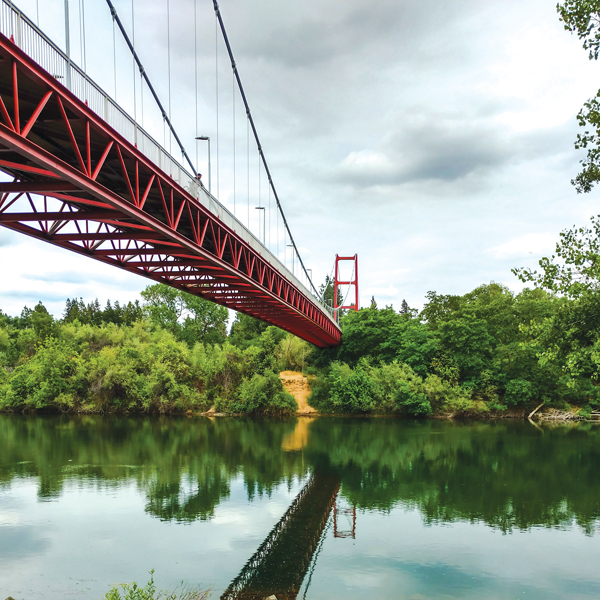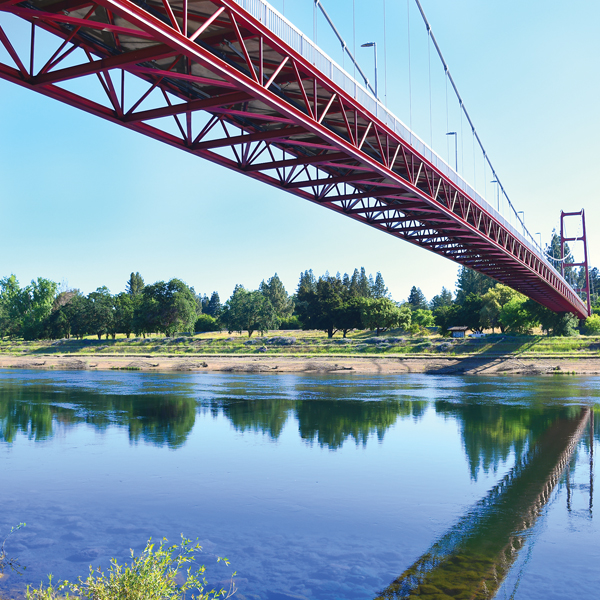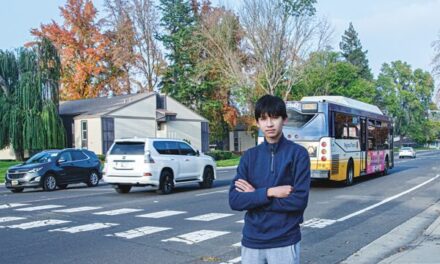Nearly 300 people tuned in for a recent virtual “community conversation” with the U.S. Army Corps of Engineers. Residents expected an open dialogue and answers to questions about erosion-control efforts along the lower American River.
Instead, they got scripted presentations, a history lesson dating back to the Gold Rush, more than 20 charts and graphs— and were left with a lot of unanswered questions.
“We were disappointed there wasn’t any kind of dialogue,” homeowner Pete Spaulding says.
Spaulding is with American River Trees, a citizens group calling for a less destructive approach to the Army Corps’ erosion-control work along the American River from Howe Avenue to east of Watt Avenue.
American River Trees submitted 21 questions prior to the meeting. “We coordinated with each other so we wouldn’t duplicate questions,” Spaulding says. “Only one question was answered.”
The Army Corps received more than 900 comment letters on the lower American River project. At two previous virtual meetings, the Corps allowed the public to make comments and ask questions. The community is still waiting for answers.
“Not one time has there been a back and forth,” says resident Alicia Eastvold, whose house backs up to the river levee.
During the “community conversation,” County Supervisor Rich Desmond reported Army Corps officials escorted him and Supervisor Pat Hume on a field tour of the next phase of work.
“It was incredibly educational for me to learn more about this project,” Desmond said. “As the public learns more, I think a lot of concerns will be allayed.”


Educational for the supervisors, but what about the public? Concerns persist.
Sacramento lies at the confluence of the American and Sacramento rivers, making it one of the highest risk cities in the United States for severe flooding. In 2016, Congress approved flood-control improvements, which included a risk-management plan to implement erosion control and bank protection along the Sacramento and American rivers.
Erosion-control work completed along the American River near River Park, Campus Commons and Sac State is intended to keep the city safe from catastrophic floods. The work has left the landscape and riverbank barren.
Desmond assured listeners the next phase will not result in the same devastation as Campus Commons. “Nothing could be further from the truth,” he said. “It’s much narrower in a lot of areas.”
Yet established vegetation and hundreds of trees, including 300-year-old heritage oaks, are scheduled for removal.
Desmond reported the Army Corps is making efforts to preserve the habitat and protect the heritage oaks. “Unfortunately, we can’t protect all of them,” he said.
The Army Corps has not shared which heritage oaks will be removed.
Another concern involves Folsom Dam and the amount of water that can be released in an emergency. The Corps says improved release capacity from the dam means the levy system must be able to handle 160,000 cubic feet per second.
American River Trees disagrees. The group says documents by the Sacramento Area Flood Control Agency show 115,000 cfs is sufficient.
“We are building around a fire hose,” Eastvold says. “In three years, we are going to lower that number and the trees will be gone.”
The Army Corps claims riprap (rock and rubble installed to protect shorelines) is required to prevent erosion. Improvements involve placing rock along the riverbank, covering it with soil to establish “planting benches” and revegetating the bank.
American River Trees says adding cobble and new plantings to augment existing trees would provide sufficient protection. Erosion at planting benches added near Sac State is already exposing riprap after normal rainfall and potentially preventing vegetation from fully returning.
“How are we going to plant something that’s going to last?” Eastvold asks. “How is it going to be a 300-year-old oak tree?”
For the upcoming work east of Howe Avenue, Spaulding says, “Let’s reexamine it with new models, new engineering with nature principles. Let’s redesign this and get community involvement while we’re doing it.”
The lower American River erosion-control project is scheduled to begin next summer.
Cathryn Rakich can be reached at crakich@surewest.net. Follow us on Facebook and Instagram: @insidesacramento.















